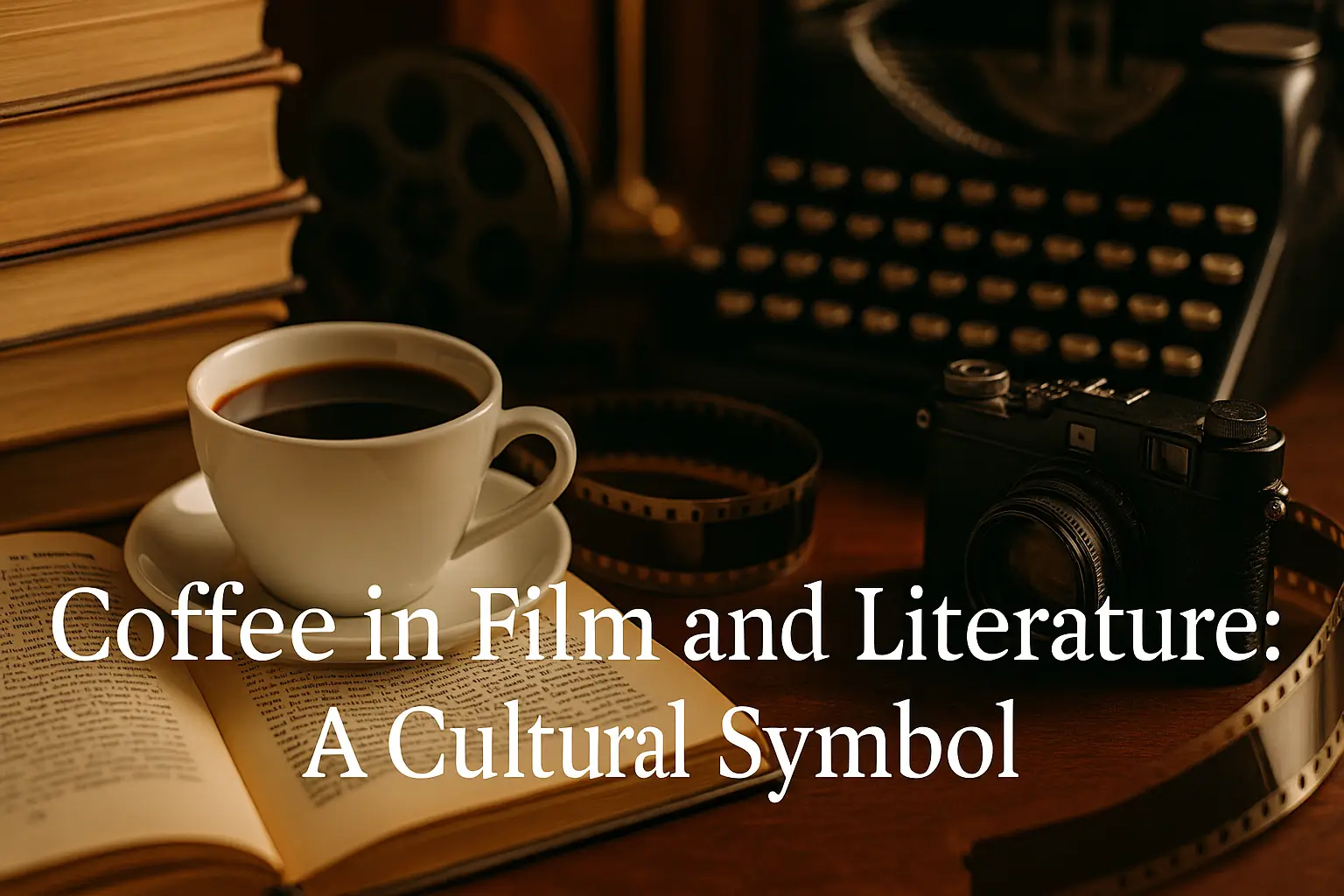Coffee is more than just a beverage—it’s a powerful cultural symbol that has appeared in some of the most iconic scenes in film and literature. Whether used to set the mood, symbolize routine, or express intimacy and introspection, coffee has become a narrative tool as much as it is a daily ritual. In this article, we explore how coffee has been portrayed across books and movies, and why it continues to hold such symbolic power in storytelling.
Coffee as a Symbol of Routine and Realism
In both literature and film, coffee is often used to ground characters in everyday life. A character making coffee is an immediate visual cue of routine, normalcy, or domesticity.
In Literature:
- In modernist and realist novels, authors like Ernest Hemingway or Raymond Carver often include scenes of coffee brewing or drinking to emphasize the mundane beauty of life.
- Coffee appears in Franz Kafka’s and Albert Camus’ works as part of existential reflection and solitary routine.
In Film:
- The simple act of sipping coffee often sets the tone for conversations, character introspection, or tension building.
- Examples:
- “Pulp Fiction” – Coffee becomes a prop in intense, bizarre conversations that blur the line between humor and horror.
- “Breakfast at Tiffany’s” – Audrey Hepburn’s iconic scene holding coffee outside Tiffany’s showcases class, longing, and daydreaming.
- “Amélie” – Coffee and café life illustrate French culture, community, and quiet observation.
Coffee and Human Connection
Coffee shops are common backdrops in film and fiction, symbolizing connection, vulnerability, and discovery. A café can be a place of romance, conflict, nostalgia, or self-reflection.
In Books:
- “Norwegian Wood” by Haruki Murakami: Many emotional moments unfold in quiet coffee shops, reflecting Japanese café culture and personal solitude.
- “The Unbearable Lightness of Being” by Milan Kundera uses coffeehouse conversations to explore politics, philosophy, and love.
In Film:
- “Before Sunrise” (1995): A Viennese café becomes a place of spontaneous intimacy and deep dialogue.
- “You’ve Got Mail” (1998): Coffee shops represent both anonymity and budding romance.
- “Coffee and Cigarettes” (2003) by Jim Jarmusch: A collection of vignettes where coffee serves as the common thread across random human connections.
Coffee as Mood and Atmosphere
Filmmakers and writers use coffee to create mood. A steaming cup can evoke coziness, tension, melancholy, or mystery depending on the setting.
Examples:
- In “Twin Peaks”, Agent Dale Cooper’s love for “a damn fine cup of coffee” adds quirky charm to a dark, surreal narrative.
- In crime dramas and detective fiction, black coffee is practically a character itself—symbolizing fatigue, determination, or late-night introspection.
In noir novels and films, coffee is often found in 24-hour diners—symbols of sleepless nights and gritty city life.
Coffee as Character Development
How characters engage with coffee often reveals something deeper:
- A detective who drinks coffee black is stoic and focused.
- A protagonist who sips slowly from a cappuccino in a quiet café is thoughtful or artistic.
- A rushed executive chugging a latte reflects stress and high performance culture.
Writers and directors use coffee choices—what’s ordered, how it’s consumed, where it’s enjoyed—to subtly define identity and mood.
Coffee as Protest and Politics
Historically, coffeehouses were centers of political thought and revolution—and this legacy is often reflected in storytelling.
In Literature:
- 18th-century British essays and political pamphlets were often set in coffeehouse discussions, influencing public opinion and satire.
- Novels about revolution or resistance frequently feature secretive café meetings.
In Modern Media:
- Films set during student protests, revolutions, or resistance movements often include underground cafés where plans are hatched and ideologies are debated.
Coffee represents not just warmth and comfort—but radical thought and social change.
Coffee’s Role in Poetic and Lyrical Writing
Poets have long used coffee as a symbol of both desire and decay, often embedding it in verses about longing, memory, or everyday life.
Famous references:
- T.S. Eliot’s “The Love Song of J. Alfred Prufrock”: “I have measured out my life with coffee spoons.”
- Langston Hughes and other Harlem Renaissance poets referenced coffee as part of urban life and cultural identity.
Final Thoughts: Coffee Beyond the Cup
From gritty detective stories to romantic dramas and philosophical novels, coffee plays a quiet but meaningful role in storytelling. It’s not just a drink—it’s a tool for realism, a window into character, and a symbol of community, contemplation, and conflict.
Next time you read a novel or watch a film, pay attention to how coffee appears. You might find it’s saying more than you realized.
